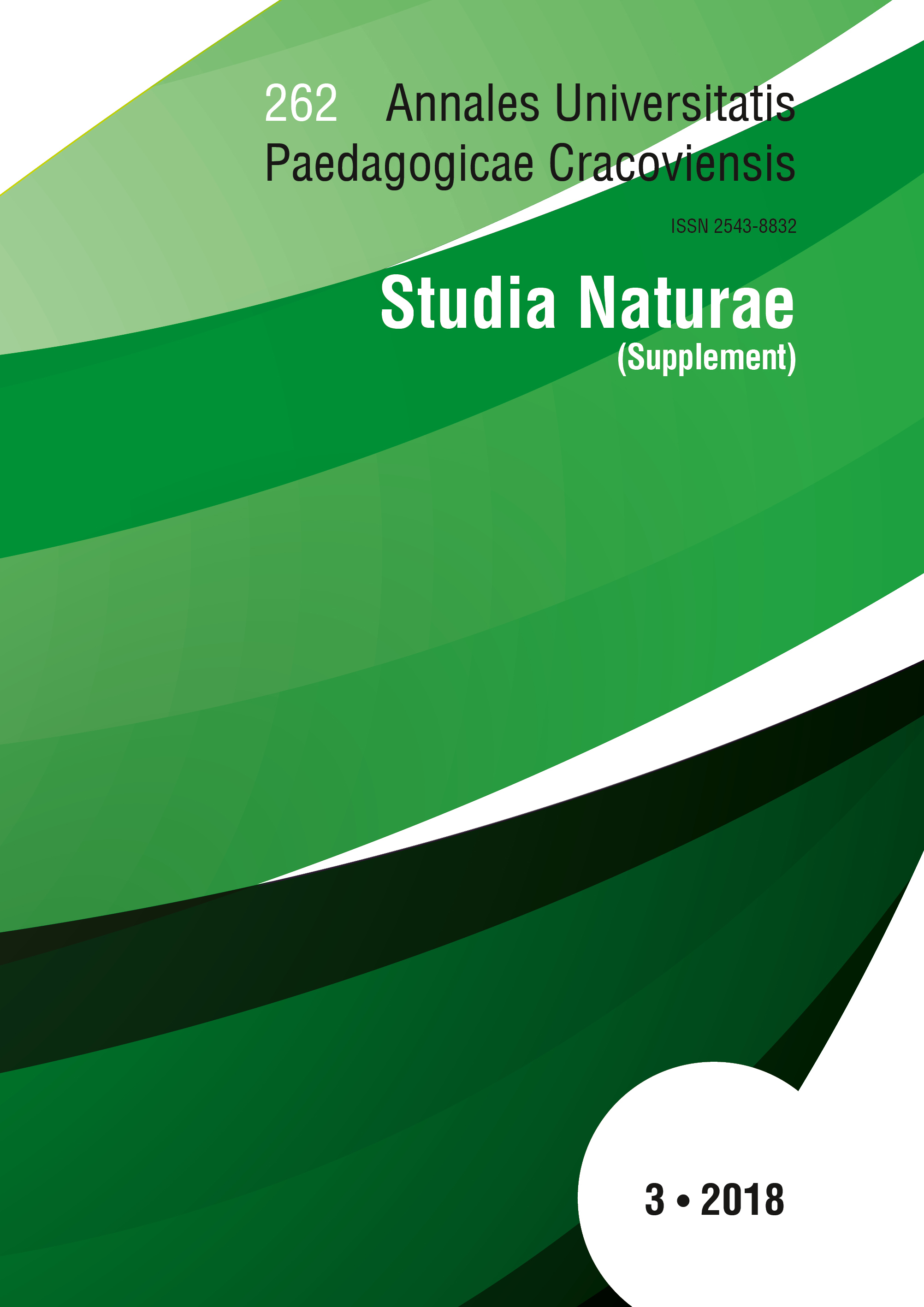Organ toxicity of diethylnitrosamine and capsaicin in mice – in vivo study
DOI:
https://doi.org/10.24917/25438832.3supp.5Keywords:
capsaicin, diethylnitrosamine, hepatotoxicity, mice, nephrotoxicityAbstract
Diethylnitrosamine (DEN) is proven to be toxic to kidneys and liver and to act as a potent carcinogen mainly in liver. Capsaicin (CAP) is an alkaloid produced by Capsicum genus plants and is considered to be a protective agent against toxicity and carcinogenicity of many substances including DEN. The aim of this study was to assess the toxicity of DEN and CAP in liver and kidneys in mice. The experiment started after two weeks of acclimatisation and was conducted according to the Czech animal welfare protection legal guidelines. At the end of the experiment the mice were sacrificed and the toxicity of DEN and CAP in liver and kidneys were analysed. The histopathological examination of the liver revealed multifocal lymphoplasmacytic reaction in parenchyma in DEN treated group. CAP used as both preventive and therapeutic agent caused reduction in number and extent of lesions. In CAP group mitotic figures were found indicating xenobiotic-induced hepatotoxicity or regenerative changes. In the kidneys DEN revealed also multifocal lymphoplasmacytic reaction that has been mitigated by CAP. Moreover histopathological observation of the kidney in DEN group has revealed granular dystrophy of the renal tubules which has not been presented in CAP treated mice. Levels of ALT, AST activity, total protein and albumin concentration was not statistically different among control and experimental groups. In this study mild protective effect of CAP on DEN-induced hepatotoxicity and nephrotoxicity was shown only in histopathological changes. The toxicity of CAP itself is questionable and further studies should be performed to verify its chemopreventive potential.
Downloads
Metrics
References
Basith, S., Cui, M., Hong, S., Choi, S. (2016). Harnessing the therapeutic potential of capsaicin and its analogues in pain and other diseases. Molecules, 21(8), E966. https://doi.org/10.3390/molecules21080966
Bitencourt, S., Stradiot, L., Verhulst, S., Thoen, L., Mannaerts, I., van Grunsven, L.A. (2015). Inhibitory effect of dietary capsaicin on liver fibrosis in mice. Molecular Nutrition & Food Research, 59(6), 1107–1116. https://doi.org/10.1002/mnfr.201400649
Bley, K., Boorman, G., Mohammad, B., McKenzie, D., Babbar, S. (2012). A comprehensive review of the carcinogenic and anticarcinogenic potential of capsaicin. Toxicologic Pathology, 40(6), 847–873. https://doi.org/10.1177/0192623312444471
Bode, A.M., Dong, Z. (2011). The two faces of capsaicin. Cancer Research, 71(8), 2809–2814. https://doi.org/10.1158/0008-5472.CAN-10-3756
Cho, J.M., Kim, K.Y., Ji, S.D., Kim, E.H. (2016). Protective effect of boiled and freeze-dried mature silkworm larval powder against diethylnitrosamine-induced hepatotoxicity in mice. Journal of Cancer Prevention, 21(3), 173–181. https://doi.org/10.15430/JCP.2016.21.3.173
Freund, H.A. (1937). Clinical manifestations and studies in parenchymatous hepatitis. Annals of Internal Medicine, 10(8), 1144–1155. https://doi.org/10.7326/0003-4819-10-8-1144
Hanna, D., Riedmaier, A.E., Sugamori, K.S., Grant, D.M. (2016). Influence of sex and developmental stage on acute hepatotoxic and inflammatory responses to liver procarcinogens in the mouse. Toxicology, 373, 30–40. https://doi.org/10.1016/j.tox.2016.10.006
Hassan, M.H., Edfawy, M., Mansour, A., Hamed, A.A. (2012). Antioxidant and antiapoptotic effects of capsaicin against carbon tetrachloride-induced hepatotoxicity in rats. Toxicology and Industrial Health, 28(5), 428–438. https://doi.org/10.1177/0748233711413801
Healy, M.E., Lahiri, S., Hargett, S.R., Chow, J.D., Byrne, F.L., Breen, D.S., Kenwood, B.M., Taddeo, E.P., Lackner, C., Caldwell, S.H., Hoehn, K.L. (2016). Dietary sugar intake increases liver tumor incidence in female mice. Scientific Reports, 6, 22292. https://doi.org/10.1038/srep22292
Koneru, M., Sahu, B.D., Mir, S.M., Ravuri, H.G., Kuncha, M., Mahesh Kumar, J., Kilari, E.K., Sistla, R. (2018). Capsaicin, the pungent principle of peppers, ameliorates alcohol-induced acute liver injury in mice via modulation of matrix metalloproteinases. Canadian Journal of Physiology and Pharmacology, 96(4), 419–427. https://doi.org/10.1139/cjpp-2017-0473
Mohammed, F.Z., Sultan, A.S., Abas, A.M. (2014). Chemopreventive and therapeutic effect of capsaicin against diethylnitrosamine induced liver injury and hepatocellular carcinoma in rats. International Journal of Biological & Pharmaceutical Research, 5(8), 630–642.
Monsereenusorn, Y., Kongsamut, S., Pezalla, P.D. (1982). Capsaicin-a literature survey. Critical Reviews in Toxicology, 10(4), 321–339. https://doi.org/10.3109/10408448209003371
Paula-Santos, N., Colaço, A., Da Costa, R.M.G., Oliveira, M.M., Peixoto, F., Oliveira, P.A. (2014). N-diethylnitrosamine mouse hepatotoxicity: time-related effects on histology and oxidative stress. Experimental and Toxicologic Pathology, 66(9–10), 429–436. https://doi.org/10.1016/j.etp.2014.07.002
Rezaie, A., Fazlara, A., Haghi Karamolah, M., Shahriari, A., Najaf Zadeh, H., Pashmforosh, M. (2013). Effects of Echinacea purpurea on hepatic and renal toxicity induced by diethylnitrosamine in rats. Jundishapur Journal of Natural Pharmaceutical Products, 8(2), 60–64.
Şekeroğlu, V., Aydın, B., Atlı Şekeroğlu, Z., Özdener Kömpe, Y. (2018). Hepatoprotective effects of capsaicin and alpha-tocopherol on mitochondrial function in mice fed a high-fat diet. Biomedicine & Pharmacotherapy, 98, 821–825. https://doi.org/10.1016/j.biopha.2018.01.026
Shaker, M.E., Ashamallah, S.A., El-Mesery, M. (2016). The novel c-Met inhibitor capmatinib mitigates diethylnitrosamine acute liver injury in mice. Toxicology Letters, 261, 13–25. https://doi.org/10.1016/j.toxlet.2016.08.015
Srinivasan, K. (2016). Biological activities of red pepper (Capsicum annuum) and its pungent principle capsaicin: A Review. Critical Reviews in Food Science and Nutrition, 56(9), 1488–500. https://doi.org/10.1080/10408398.2013.772090
Sun, H., Yu, L., Wei, H., Liu, G. (2012). A novel antihepatitis drug, bicyclol, prevents liver carcinogenesis in diethylnitrosamine-initiated and phenobarbital-promoted mice tumor model. Journal of Biomedicine and Biotechnology, 2012, 584728. https://doi.org/10.1155/2012/584728
Surh, Y.J., Lee, S.S. (1996). Capsaicin in hot chili pepper: carcinogen, co-carcinogen or anticarcinogen? Food and Chemical Toxicology, 34(3), 313–316. https://doi.org/10.1016/0278-6915(95)00108-5

